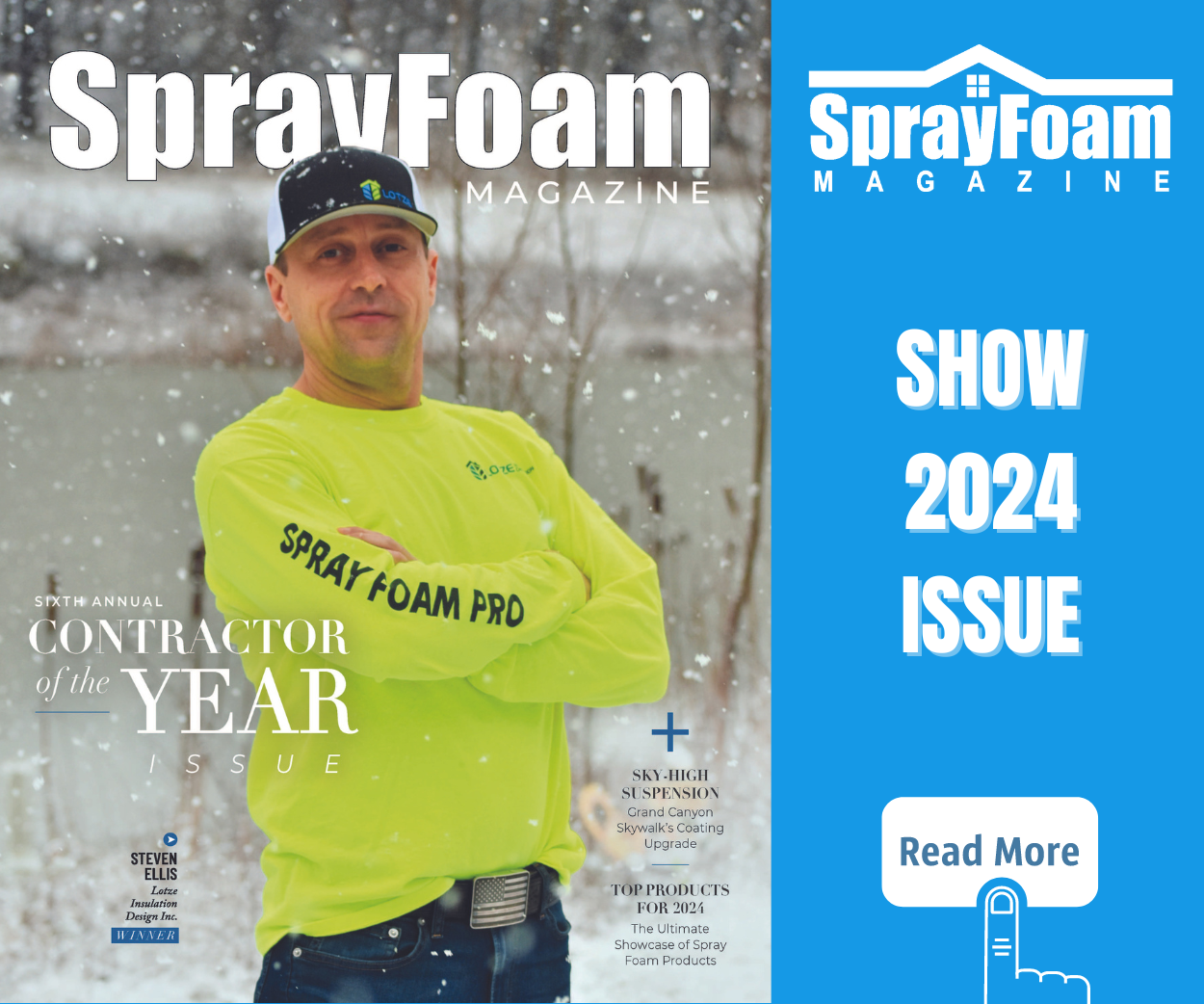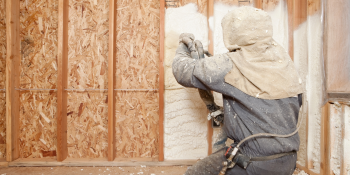Q&A Forums
Tripolymer, Airkrete, Insulsmart? Post New Topic | Post Reply
| Author | Comments |
|---|---|
|
Dan Hansen
Posted: Mar 27, 2010 12:56 PM
|
Tripolymer, Airkrete, Insulsmart?
I built a new house with 2 x 6 walls. I was convinced that 2.5 inches of NCFI closed cell foam was enough. Now after one winter I don’t think it is. I have 1.5 inches sprayed in the attic with an R-38 of cellulose on top. The doors and windows are all very tight. There are no drafts or cold areas anywhere in the house. I measure my need as to how fast the house would cool down with the heat off with it at 0 degrees outside. I don’t remember how fast it was but it got cold in a hurry. So the question is, has anyone ever tried filling the wall cavity with an injection foam like Tripolymer, Airkrete, or Insulsmart after a closed cell foam has been used? One of my concerns is the same as a flash and batt. Will I have moisture concerns in my Northern Illinois climate? |
|
John Shockney
Posted: Mar 28, 2010 12:52 PM
|
So you have an R-17? That should perform like R30+ of fiberglass. My only question is how much of the wall surface are windows (R-7or less) and how much is wall structure that can be further insulated. A HVAC contractor can help you do a heat loss heat gain sheet and can calculate how fast the house should cool down at 0deg you could use this as a baseline to see if your house is cooling down too fast. You may want to use a thermal imaging camera to find the high heat loss locations to determine if adding insulation will help. I have no personal experience with Tripolymer, Airkrete, or Insulsmart so I can’t give you any advice on adding them to the wall system. Hope this helps John Airpro |
|
Dan Hansen
Posted: Mar 28, 2010 03:25 PM
|
I did use a thermal camera on a zero degree day. No surprises. I took shots from both the inside and out. The big loser I saw from the outside was the bathroom vents even with them off. I am not at my home computer right now but I do remember the walls being cooler than the room temperature. I think it was 70 for the air temp and the wall contact was like 63. I also have insulated vinyl siding that is supposed to be an R-4. I think I remember the siding at about 10 degrees contact with the zero degree outside temp. I have an average number of windows for a colonial style house other than a patio door and an 8’ x 8’ set of windows. I think I was hoping for better. Like a $1 heat bill. I was at about $180 - $200 for my worst month on 2400 sqft. and 1700 sqft basement with a full exposure. |
|
Bryan Kwater
Posted: Mar 28, 2010 05:05 PM
|
How are your basement walls and floor insulated? |
|
Dan Hansen
Posted: Mar 28, 2010 06:07 PM
|
Slab has 2" foam with radiant heat. The walls are Thermomass using 2" foam. http://www.thermomass.com/downloads/files/THERMOMASS_Residential.pdf http://www.thermomass.com/construction/pouredinplace.htm |
|
John Shockney
Posted: Mar 28, 2010 06:49 PM
|
You don’t have your vents hooked to a Heat Recovery Ventilator system? Airpro |
|
Posted: Mar 30, 2010 06:36 AM
|
reflections from the cornfield... ok,,,physics is physics.. you can not install 30% less and expect 40% more.. what you have is a home insulated to minimal energy star type standards,,that is a home which outperforms a structure built to minimal code standards(uh,,could be 2x4 with r13 filterglass)by about 15%.... yes you could inject a aminoplast type foam..but they all have about <0.25% shrinkage inherent to their chemical composition..some more than others..obviously this would be at the stud to foam interface,,and it may show on thermal imageing...but it would add additional rvalue to the whole wall system,,and should afford you better performance,,, now the attic,,you have a wonderful air barrier with the 1.5" application and have as close to a contigious seamless transition from sidewalls to lid as you can get...but again,,physics is physics,,and you have the minimum rvalue for your zone 5,,you are about r49,,,remember hot air rises,,,(its rollin off the top of my head as i type)so why not blow additional cellulose over the lid to obtain a higher rvalue???help reduce the convective currents which are inherent to a fibrous insulation system,,which is what you have up here,,the foam is an air barrier at best... modeling shows your 2.5inches in zone 5 (i used chicago weather for modeling) should be adequate to reduce the chance of condensation in your sidewall cavity..i would bet my e30 that your attic lid had condensation/frost on the undersurface of the deck this winter...all fibrous attics did,,just no one went up there when it was hellincold.... so..yes..injection foam would be a realistic option as long as you accept its limitations..it is what it is,,and it aint what it aint... add rvalue... and while your at it have em blow the lid to r60 minimum,,or more if you got the space,,the crap is cheap... hope this helps 'dude |
|
Dan Hansen
Posted: Mar 30, 2010 09:10 AM
|
Heat recovery ventilators, when connected per the manufacturer’s instructions are whole house vents. I do have a duct to each bathroom from my HRV but that does not flow what is required for the size of the bathrooms. Additional venting for the bathrooms is recommended by the HRV manufacturers. |
|
Dan Hansen
Posted: Mar 30, 2010 09:42 AM
|
The 1.5” of foam in the attic does qualify as a moisture barrier. That was the intent and it did perform its function because I was in the attic when it was zero outside. I was up there with the thermal imaging camera looking everywhere from every angle. The roof deck was cold but dry and frost free. The minimum DOE R value for my attic is 38 to 60. At 49 I don’t think that would be considered that I am doing the minimum. I will eventually ad more up there as it settles but I think I have gone above and beyond when all the builders in the area are doing an R-38 and don’t have the foam for the air/moisture barrier. |
|
John Shockney
Posted: Mar 30, 2010 05:48 PM
|
Your statement about Heat Recovery Ventilators is incorrect check this web page from Fantech http://www.fantech.net/indoor_air_quality.htm Check the installation options and look at the good better and best options, you will find that all venting to the outside should go through the HRV also you need enough makeup air coming in so you don’t create negative pressure in the house. Thanks John Airpro |
|
Dan Hansen
Posted: Mar 30, 2010 08:45 PM
|
I didn’t want to turn this into a thread about ventilation. If you look at the installation diagram on page 8 you will see that even for new construction a separate bath fan is shown. http://www.fantech.net/vhr704_inst.pdf A large HRV dedicated for each bathroom would give the CFM needed but that can get expensive. With two 10 x 10 bathrooms, one with a whirlpool and a steam shower and the other with a clawfoot and a separate shower, a single HRV does not have enough air flow. Then throw in a powder room, full bathroom in the basement, and the laundry. I do have my HRV going to all these locations but, you need the CFM to move large volumes of moisture and smells when needed. I am going to add a normally closed electric damper to my bathroom vents. That should stop the heat loss when the units are off. I am not worried about heat loss for the short periods during use. |
|
Posted: Mar 31, 2010 07:37 PM
|
"The 1.5” of foam in the attic does qualify as a moisture barrier. That was the intent and it did perform its function because I was in the attic when it was zero outside. I was up there with the thermal imaging camera looking everywhere from every angle." to keep the topic on course,,this aint about ventilation... moisture barrier???do you mean vapor retarder?? so you are stopping moisture vapor from passing from the house into the attic..good friggin deal,,glad you have an hrv to help manage the moisture vapor in your home...serious... you cant have steak on a hamburger budget... hot travels to cold..physics is fizzzics...and the 1.5" of cc foam or any foam is not going to give you INCREASED thermal performance...spf is not some magic friggin stuff that you just put an inch here,,another inch or 2 there and good golly miss molly im gonna save boocoo bucks.. equilfrigginlibrium is a force of nature... this is why conditioned lids are the schiznitz... but good god...5-6" of closed cell foam to the undersurface of the roof deck,,,i want cheap..lol i have a home i sprayed,,independantly tested with blower door,,ir and manual j calculations...3600 sq ft conditioned space...geothermal heated..heats for $250 a year,,cools for $38 a year,,domestic hot water production for the 4 occupants is more per year than the heat and cooling costs combined...is this what you were after???they have 3" cc on the foundation...5" oc in the framed walkout..sips on the main,,and 15" of oc from the top plate to the peak,,,steak on a steak budget,,, vac out the filterglass,, or not,,by your own admission it aint workin,,,and spray 6" cc to the undersurface of your roof deck..the house will perform much better.. btw,,,what do you have in the sidewalls,,air seal cc with glass over??? hamfrigginburger... respectfully dude |
|
Posted: Apr 15, 2010 05:36 PM
|
bump: btw,,,what do you have in the sidewalls,,air seal cc with glass over??? |




























